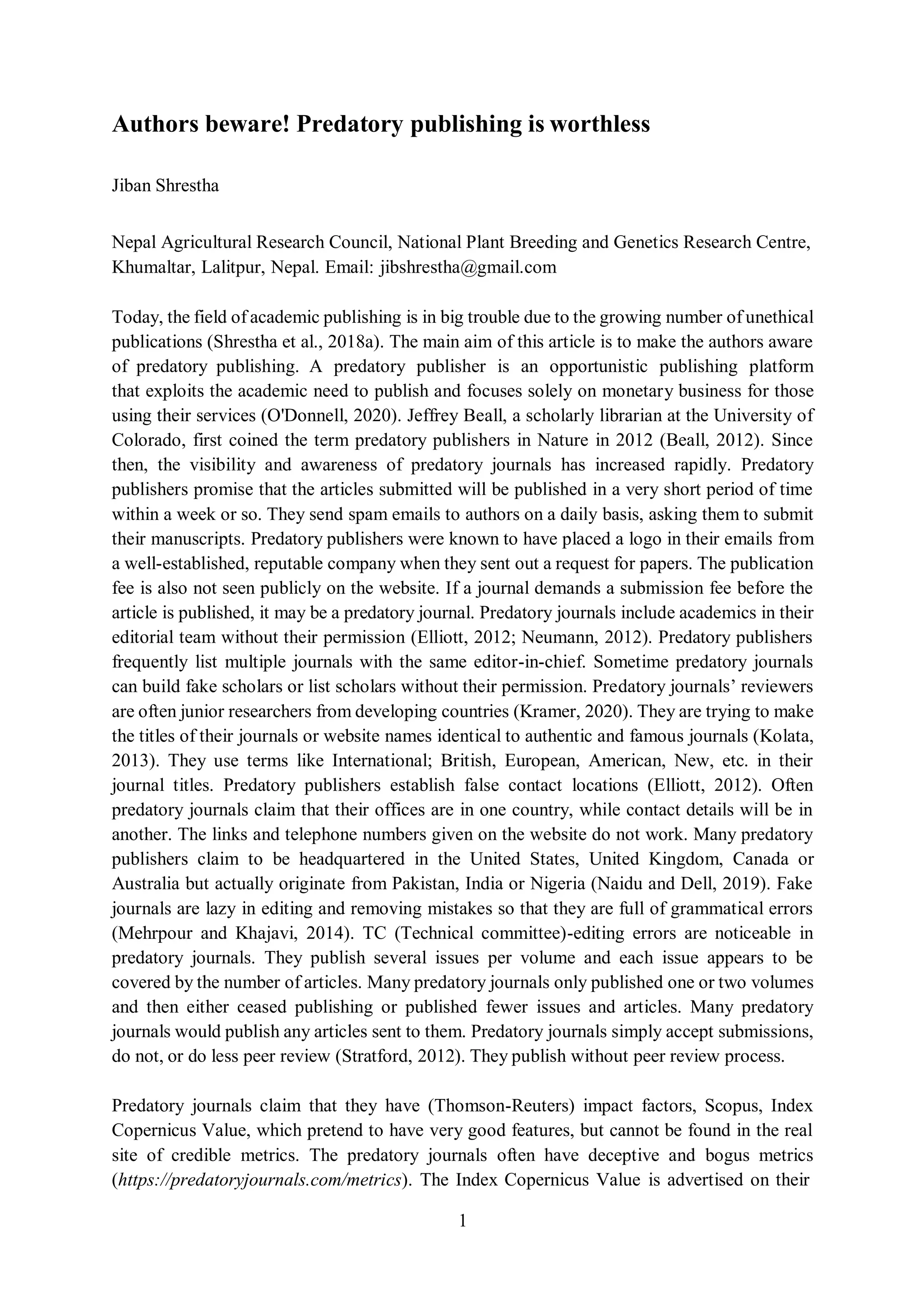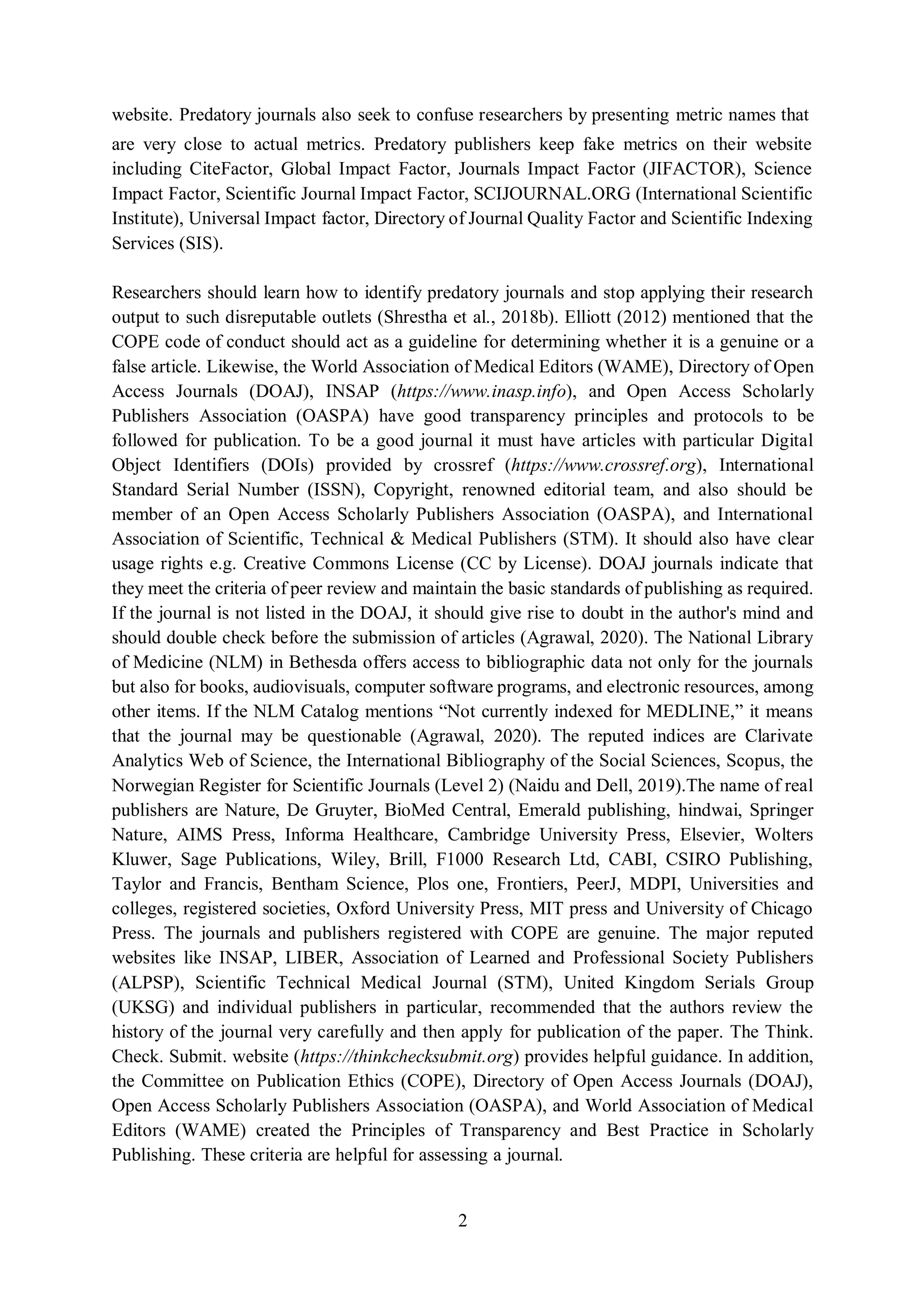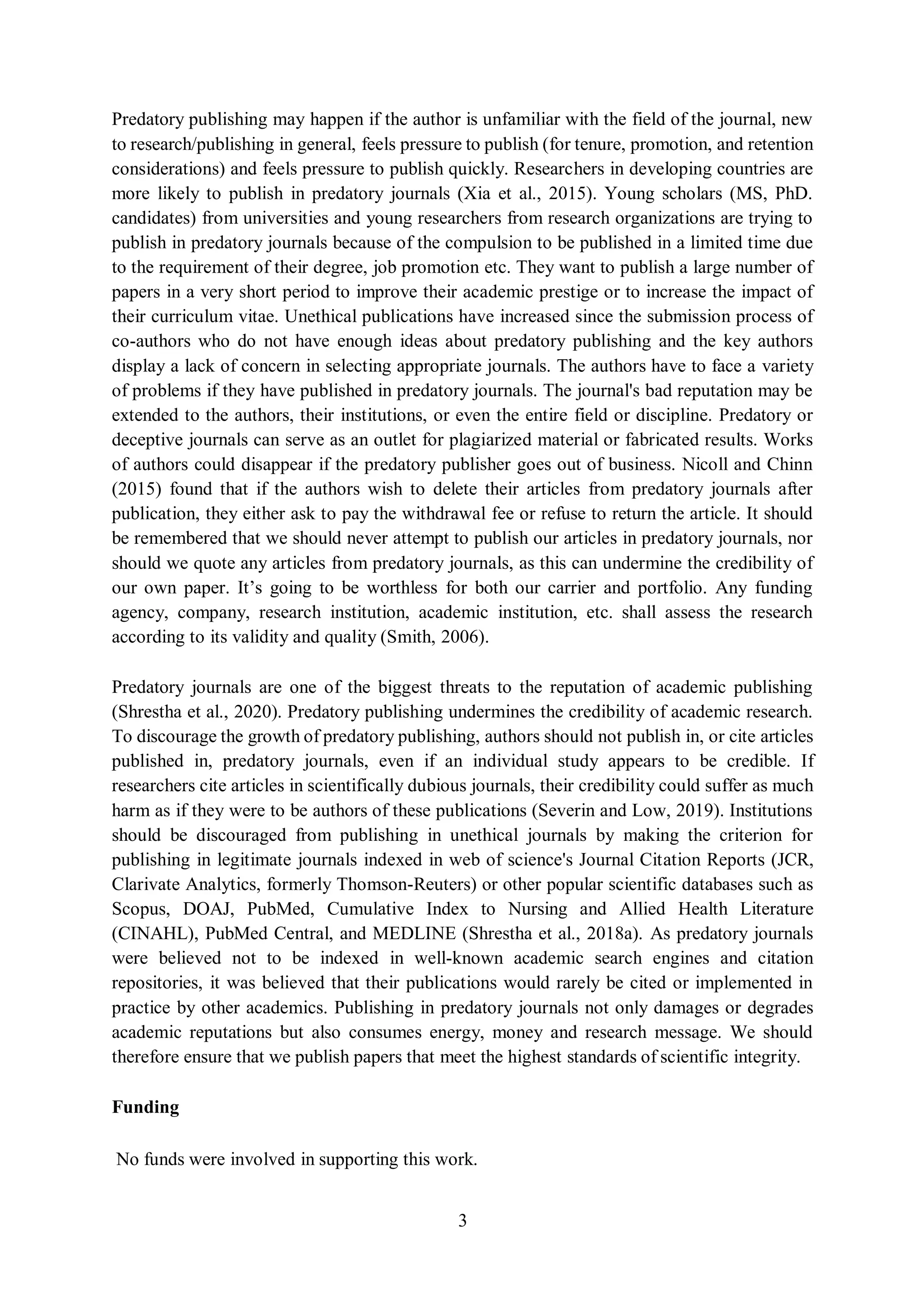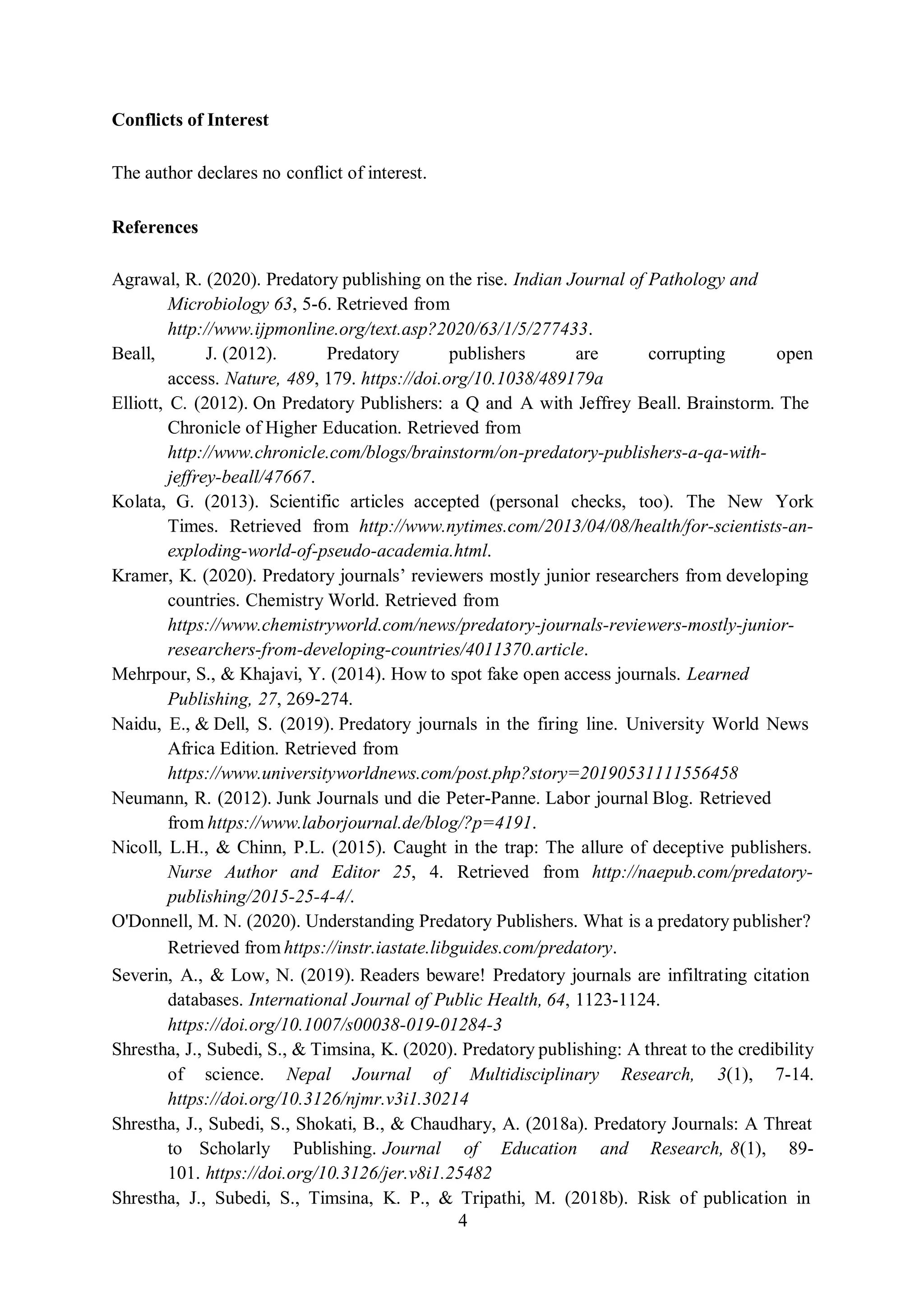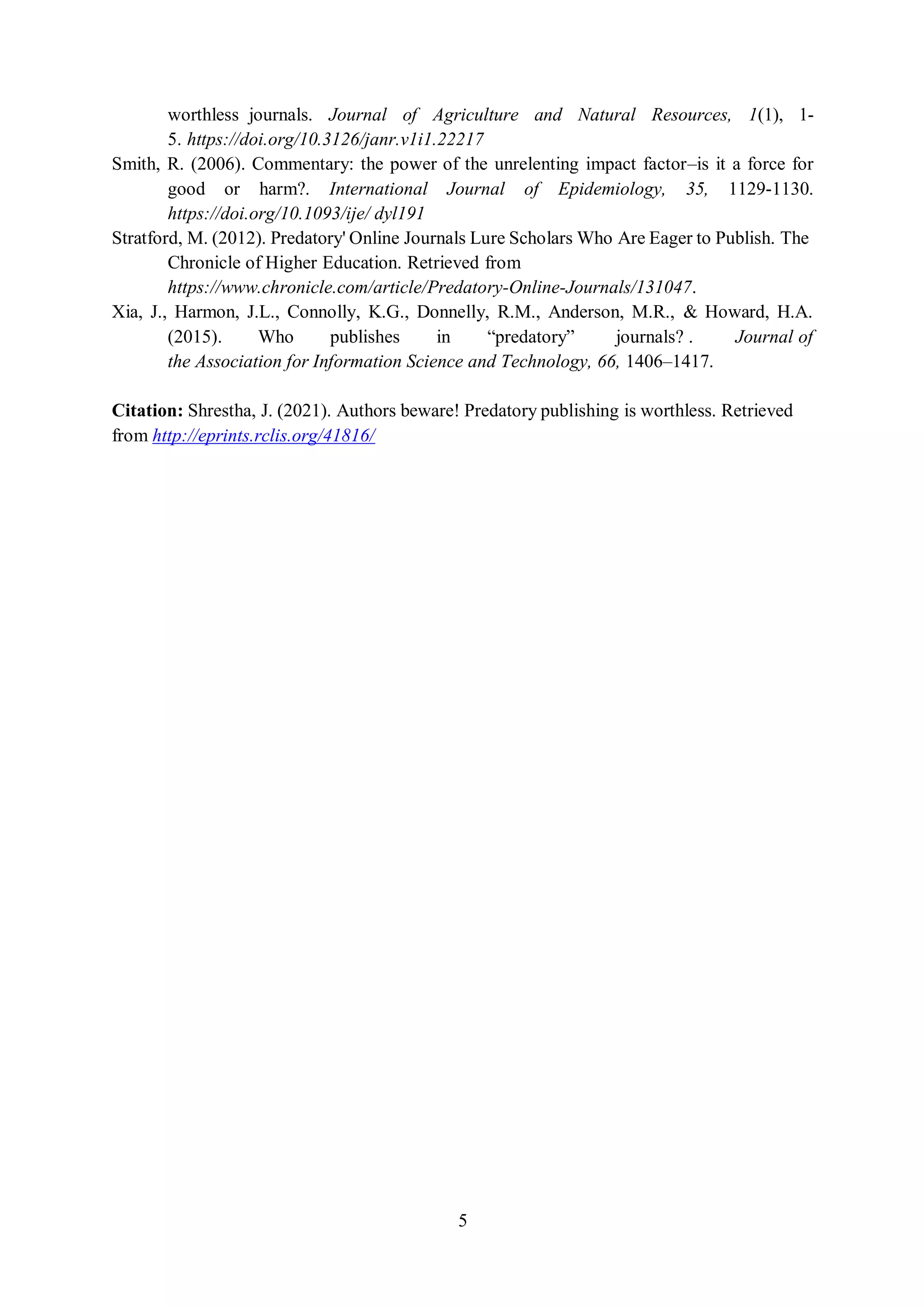This document discusses the issue of predatory publishing and how to identify predatory journals. It defines predatory publishers as opportunistic publishing platforms that exploit the need to publish but focus only on monetary gains. Predatory journals use deceptive practices like fake impact factors and metrics to attract authors. The document provides tips for authors to identify predatory journals, such as checking for inclusion in databases like DOAJ or verification of the publisher and editorial board. It warns that publishing in predatory journals can damage authors' credibility and reputation.
